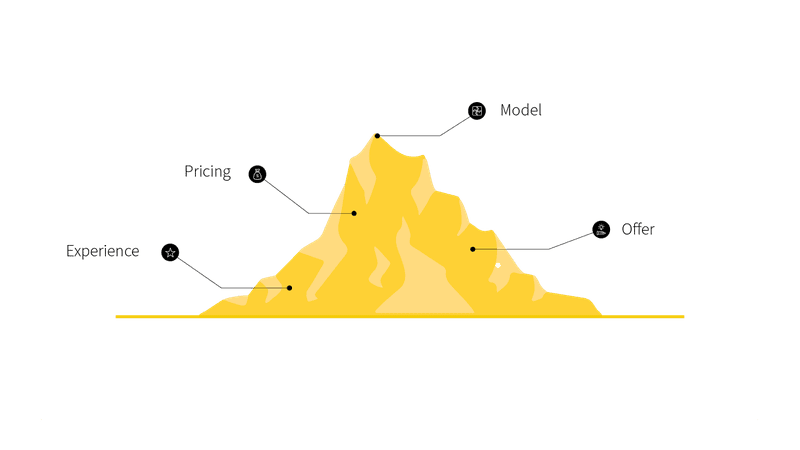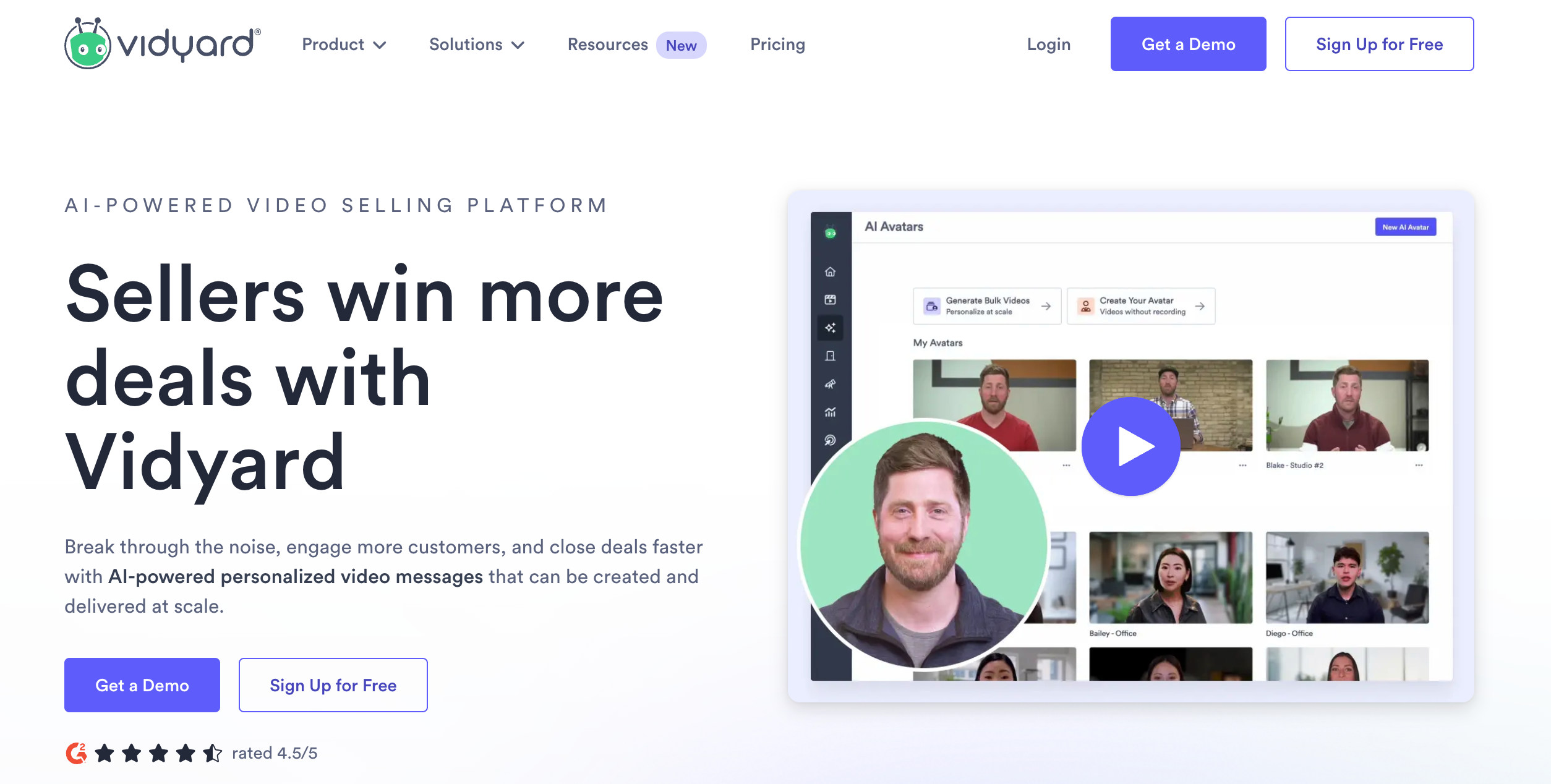Common Product-Led Mistakes to Avoid
Product-led growth is a new way of buying.
When you think about the typical way of selling software, a lot of times that’s about demos, where it’s like, hey, let me show you exactly what this does. And that’s common in a product-led motion. It’s all about, can I try before I buy? Can you show me the value? Whereas the sales-led model is all about telling people.
Every single company in the world can be product-led. Now, different forms of product-led growth exist, so how this looks for your company might be completely different. For instance, what we’re doing today with the blogs and the content game is a form of being product-led.
Can we provide a ton of value to solve your big problems before you ever become a customer, to build trust, and to serve people before we sell them? Absolutely. Does it always have to be a free model? No. But that’s a great place to start, as your company embodies this across the entire business.
Try Userpilot Now
See Why 1,000+ Teams Choose Userpilot

Common mistakes companies make when growing product-led
I will share the number one mistake, along with a bit of my research.
The biggest mistake a lot of people make is that they think of product-led growth as just the free model or transparent pricing, overall experience, onboarding, and the like. That’s actually what gets people in trouble, is that we think it’s this mount PLG.
But you forget everything that supports PLG, such as everything below the surface:
When you implement PLG without proper planning, you lack the organizational foundation to support your efforts. You’re missing a clear strategy that defines where Product-Led Growth fits into your overall business model. And as a result, you end up without the right teams, capabilities, or data infrastructure necessary for success.
You can’t see if users find your product valuable. You won’t be able to run great experiments to improve your Product-Led Growth approach. This is the biggest mistake most companies make with PLG.
Examples of companies that have made these mistakes
I’ll share my own story for this one.
So, when I was at Vidyard (video marketing tool), we decided to launch a free trial since everybody else was doing it.
So we just looked and said, oh okay, our competitors are doing a 14-day free trial, let’s do that too. And we simply slapped on a free trial.
We got a lot more sign-ups, but then we were wondering why none of those people were converting. The only ones that did were the ones that sales had talked to. Surely, PLG doesn’t work in this instance.
And so, it really comes back to what I said before because we approached it very surface-level. We just slapped on PLG to our business, but we didn’t have that PLO (product-led organization) experience.
Now, compare that to our second time when we realized that nobody was uploading videos in our free trial. So we asked them why, and they explained it’s because we didn’t really have a good video we could share.
And so we decided, let’s just make it free and make it easy for anybody to do that. We created a free Chrome extension, and because we did that, it made it so easy for people to have that experience.
Within the 1st 12 months, we had 100,000 people going through and using the product, and then there are millions of people today.
That is still to this day, you start with Vidyard, and you create a video. It’s easy. And that is exactly why it worked, because it solved a meaningful problem, and people were able to get access to that value in the product quickly.
How can companies avoid falling into these PLG traps?
The main thing that companies can do to avoid falling into this trap is to start with a product-led organization.
Your PLG motion will only become as strong as your product-led organization. And those product-led organizations are the company-focused backbone that makes PLG work. So that is how you avoid it.
Signs of failure
What are some signs that your PLG strategy is failing? There are several key indicators to watch:
- A poor free-to-paid conversion rate is the most obvious red flag. When very few users upgrade from your free tier to paid plans, it signals fundamental issues with your value proposition.
- High early-stage churn is concerning. If customers consistently abandon your product within the first 30, 60, or 90 days, your model likely isn’t delivering sufficient value quickly enough.
- Low engagement is telling—when users simply stop logging in altogether, they’ve failed to integrate your product into their workflow.
How can sales-led/marketing-led companies transition into product-led?
You have to start with your strategy, identify the ideal user, and then build your intentional model.
Then, phase 2 is all about building a product that sells stuff. So you have to get the right offer, make it frictionless for people to get the value, and choose powerful pricing so people can sign up on their own.
And then you can move into the 3rd phase, which is all about getting the right data, launching experiments to improve, and then making sure you have the right team.
So that order solves 90% of the problems when it comes to transitioning. You have to follow this order and get everybody on track with the right approach.
What are the cultural shifts that companies need to make to successfully adopt a product-led approach?
There are a lot. I’ll sum up some of the core values you would need:
- Simplicity: Simplicity is important for a product-led company just because by nature, what you’re doing is making something a lot easier. So, you have to embody that.
- Transparency: You’re putting your product first, and it might not be that good of an experience initially, but you have to believe in that and give people that transparent experience to experience the value of the product, the pricing, and all those things.
- Empowerment: Make sure you’re really all about empowering your users to see value and giving them everything they need to succeed.
- Empathy: You have to make sure you build a culture of empathy, whether that’s having everybody on your team do a day of support monthly or something like that to just keep them grounded, so they understand what those challenges are that people have.
How can companies measure the success of their product-led strategy?
Product-Led Growth success hinges on three essential pillars:
- Effortless annual recurring revenue: This measures how effectively your product sells itself without heavy intervention. Self-serve revenue is our north star metric; it reveals both your current position and your destination.
- Lean scalability: The true PLG advantage comes from generating substantial growth with a streamlined team. Revenue per employee becomes the definitive measure of your operational efficiency and leverage.
- Durable growth: The ultimate test is whether you can systematically increase profitability year after year. This demands a resilient, adaptive strategy that evolves as competitors inevitably close the gap. Your business must continuously reinvent itself while maintaining unwavering focus on profit metrics specifically relevant to your market position.
What advice would you give to companies looking to adopt a product-led growth approach?
Have conviction. So the clients we struggle with are the ones who are tiptoeing their way around PLG. If you’re gonna be a marathon runner, be a marathon runner. Don’t try and be a sprinter.
There’s conviction and then commitment. Because honestly, for the first year, maybe even the second, this whole PLG thing might not look like a home run on paper. You’ve really got to lean in and trust the process.
Don’t Miss Out on Expert Knowledge That Keeps You Ahead.





